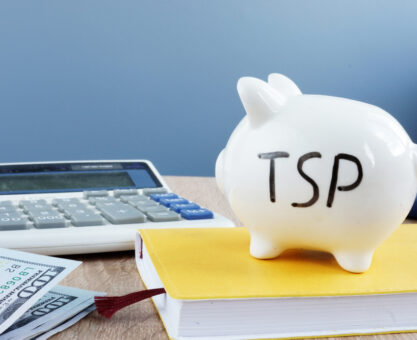During your years working for the federal government, you make contributions to your Thrift Savings Plan (TSP) to build your nest egg. This is called the retirement accumulation phase and, other than adjusting your contribution amount or choice of investment funds, you’re more or less cruising along on auto-pilot.
Then the day comes when you apply for retirement and, as you go through the process, a nagging question comes to mind: “What should I do with my TSP?” Fortunately, you have a few options.
“Keep in mind, when you leave your entire balance in the TSP, your investment options are limited to funds offered in the plan.”
Leave Your Money In Your TSP & Let It Grow
If you have no need to withdraw TSP funds early in retirement, you can simply let it grow. If you choose this option you will have full access to your money if or when the need arises. Keep in mind, when you leave your entire balance in the TSP, your investment options are limited to funds offered in the plan.
If you’ve retired at age 55 with an immediate annuity, there are no penalties for withdrawals. Of course, you’ll need to start taking Required Minimum Distributions (RMDs) once you turn age 72. Even your ROTH TSP is subject to RMDs.
Purchase The TSP MetLife Annuity
MetLife was selected by the TSP Investment Board to serve as the exclusive TSP annuity provider. When you choose this option, you give some or all of your TSP balance to MetLife for guaranteed fixed payments for the rest of your life. Keep in mind that the amount of your payment is based on how much of your TSP balance you used to buy the annuity and your age at the time of the purchase. It’s important to understand that the MetLife TSP Annuity isn’t your only choice. Other insurance companies offer different types of annuities that may provide a better payout.
Start Regular Installment Payments
Prior to the TSP Modernization Act, federal retirees’ could only opt for monthly installment payments. Now you can choose monthly, quarterly or annual payments. You can schedule a date up to six months into the future to start your installment payments and they will continue unless you stop them or until your account balance equals zero.
Your traditional TSP distributions are subject to federal income taxes. The TSP withholds 20% for federal taxes on installment payments that last less than 10 years. You can request a higher amount be withheld but not less.
Before you make a final decision, connect with an FRC™ trained advisor who understands your federal benefits and can answer your questions.














